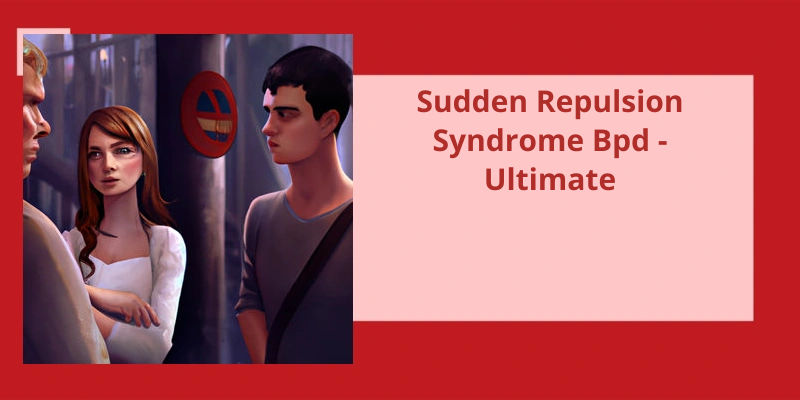As litigation proceedings continue, one critical stage that parties often face is the discovery phase. During this time, each party may request information, documents or other evidence from the other side in an effort to build their case. Responding to discovery requests can be a complex and time-consuming process, requiring careful consideration of the parameters set out in the request, as well as the possible implications of the information being disclosed. A well-planned and executed response can make a significant impact on the outcome of the case, so it’s important for parties to approach this stage with a comprehensive strategy. This article will explore some key considerations for drafting a successful response to a discovery request.
What Are Written Discovery Responses?
When responding to written discovery requests, it’s important to understand the types of responses that you can provide. These responses are designed to help you provide the information that’s requested in a clear and concise manner.
Interrogatories are questions that are posed to the opposing party in a legal matter. These questions can cover a wide range of topics, such as details about the incident, financial information, or information about witnesses. When responding to interrogatories, it’s important to provide detailed and accurate answers that are responsive to the questions that are being asked.
Requests for production of documents are another type of written discovery response. These requests are used to gather information that’s contained in documents. Examples of documents that may be requested include contracts, agreements, and emails. When responding to requests for production of documents, it’s important to provide all relevant documents that are responsive to the request.
Requests for admission are questions that are posed to the opposing party that require them to admit or deny certain facts. These types of requests are useful in narrowing down the issues that may need to be litigated in a legal matter. When responding to requests for admission, it’s important to carefully review the questions that are being asked and provide accurate responses.
For example, you may choose to object to certain requests that you feel are overly broad or irrelevant. It’s also important to consult with an experienced attorney who can review the discovery requests that you receive and help you craft an appropriate response.
Overall, responding to written discovery requests can be a complex and time-consuming process. It’s important to take the time to carefully document all relevant facts and to provide accurate and timely responses. By utilizing the appropriate types of written discovery responses, you can help ensure that your legal matter proceeds smoothly and efficiently.
The Role and Importance of Discovery in the Legal Process
Discovery refers to the process of gathering evidence and information that’s relevant to a legal case. It plays a crucial role in the legal process as it helps both parties understand the facts and evidence that will be presented at trial. It can also help parties reach a settlement before trial. Proper discovery ensures that all parties have access to the relevant information needed to make informed decisions and present their case effectively.
Now that you know how to write a discovery request for production, the next step is to understand how to respond to one. When you receive a discovery request, it’s important to know how to draft a clear and concise discovery response. Being prepared and organized can help ensure that you’re able to comply with the request in a timely and efficient manner. So let’s take a look at how you can write an effective discovery response.
How Do You Write a Discovery Response?
One important aspect of preparing for a lawsuit is the discovery process. This is where both parties have an opportunity to gather evidence and information from one another to build their case. As part of this process, it’s important to know how to write a discovery response.
The first step in writing a discovery response is to have a meet-and-confer session with the other party. This is where both sides can discuss the scope of the request, any objections that may arise, and any potential issues that may arise in the production of evidence.
Once this meeting has taken place, the next step is to determine the evidence that’s needed. This involves reviewing the request for production and identifying any documents or information that may be relevant to the case. It’s important to be as specific as possible in your request, including any dates, times, or locations that may be relevant.
After identifying the evidence that’s needed, the next step is to create a request for production. This document should be clear and concise, outlining the specific information or documents that are being requested. It should also include a deadline for the other party to respond and instructions on how to produce the requested evidence.
Once a request has been sent, the next step is to wait for a response. This can sometimes take several weeks or months depending on the complexity of the case and the volume of evidence that’s being requested. It’s important to be patient during this time and to follow up with the other party as needed to ensure that the requested evidence is produced in a timely manner.
By following these steps, you can ensure that you’re properly prepared for your lawsuit and have the evidence that’s necessary to build a strong case. Remember to be specific in your requests, follow up as needed, and be patient as the process unfolds.
Source: A Guidebook To Discovery Requests: Sample Request Included
In order to understand the objections to discovery responses, it’s important to recognize that these objections defend the party who’s being questioned or requested information. Without these objections, parties could be compelled to provide information that may be irrelevant or unnecessary for the case at hand. The objection of an unduly burdensome or overly broad request can be used to limit the scope of discovery and protect the party from undue strain or exposure.
What Is an Objection to Discovery Responses?
One of the main objections to discovery responses is that they can be unduly burdensome on the responding party. This can be particularly true in cases where the request for information is very broad or involves vast amounts of data. A responding party may object to a discovery request on the grounds that it’s simply too onerous a task to provide all of the information that’s been requested. This can be especially challenging in cases where the information being sought is complicated or difficult to locate or retrieve.
Additionally, parties may object to discovery requests that they believe aren’t relevant or aren’t likely to lead to relevant information. In some cases, this objection may be based on the belief that the information being sought is simply not germane to the issues at hand or isn’t likely to be of any use in determining the outcome of the case. In other cases, the objection may be based on a legal privilege or other form of protection that the information enjoys.
These objections may be particularly difficult to resolve, as they implicate fundamental rights and interests that are protected by law. In these cases, the parties must work together to find a way to balance the competing interests of justice and privacy, often with the assistance of the court.
It’s important to respond to a request for discovery within the specified timeframe to avoid any legal consequences. Depending on the case, a judge may issue a scheduling order to establish deadlines for discovery and other legal proceedings. In this article, we will discuss how to properly respond to a request for discovery and navigate the complex legal process.
How Do You Respond to a Request for Discovery?
Once you receive a request for discovery, it’s important to carefully review the request and determine what information is being asked for. You should make sure that any documents or information you provide in response to the request are relevant to the case and don’t contain privileged information. It may be helpful to consult with an attorney before responding to a discovery request to ensure that you aren’t disclosing any information that could be harmful to your case.
In some cases, you may need to request additional time to respond to a discovery request. This may be necessary if you need to gather additional information or consult with experts before providing a response. You should make sure to communicate any scheduling issues or delays to the other party and the court as soon as possible. Failure to respond to a discovery request or comply with a scheduling order could result in sanctions or penalties.
Overall, responding to a request for discovery can be a time-consuming and complex process. It’s important to approach the request with a clear understanding of the relevant legal requirements and to be thorough and honest in your responses. By working closely with your attorney and following any court orders or scheduling orders, you can ensure that you’re responding appropriately to the discovery request and protecting your legal rights and interests.
Different Types of Discovery Requests That Can Be Made and How to Respond to Each
- Interrogatories: Written questions sent to the opposing party. Respond within 30 days.
- Request for Production of Documents: Request to produce specific documents. Respond within 30 days.
- Request for Admissions: Statements to admit or deny. Respond within 30 days.
- Depositions: Oral testimony under oath. Respond by appearing at scheduled date and time.
- Subpoenas: Request to produce documents or testify in court. Respond by complying or objecting.
- Motions to Compel: Request to compel responses to discovery requests. Respond by complying or objecting.
- Protective Orders: Request to limit or prevent disclosure of certain information. Respond by agreeing or objecting.
Moving beyond the verification requirement for responses to document requests, Requests for Admissions under federal law are also subject to specific guidelines that mirror state practice. Rule 36 offers clarity on how these requests are to be handled, ensuring that both parties understand their rights and obligations in the discovery process. By examining the differences between federal and state practice regarding verification requirements, we gain a deeper understanding of the nuances of discovery and how they impact litigation strategy.
Do Discovery Responses in Federal Court Need to Be Verified?
In federal court, discovery is an important aspect of the litigation process, allowing parties to obtain relevant information to prepare their cases. There are several types of discovery, including interrogatories, requests for production of documents, and requests for admissions. While responses to interrogatories and requests for admissions need to be verified in federal court, responses to requests for production of documents do not.
This means that when a party requests documents from the opposing party, the responding party doesn’t have to verify the accuracy or completeness of the documents produced. However, there are consequences if a party responds falsely or incompletely to a request for production of documents. The responding party may be subject to sanctions, including monetary penalties or even dismissal of their case.
Requests for Admissions in federal court are governed by Rule 36, which operates in a similar manner as Requests for Admissions under state law. This rule allows a party to request that the opposing party admit or deny certain facts that are relevant to the case. If the opposing party fails to respond or denies a fact that’s later proven true, they may be subject to sanctions.
Verification of discovery responses serves as a mechanism to ensure that parties aren’t withholding or falsifying information during the discovery phase. This helps to ensure a fair trial and prevent abuse of the discovery process.
While responses to requests for production of documents don’t have to be verified, parties still have an obligation to produce relevant and responsive documents.
The Consequences of Failing to Produce Relevant and Responsive Documents in Response to a Request for Production of Documents
This topic discusses the negative outcomes that may arise when someone fails to give appropriate and appropriate records when provided with a request for documents. It explains the importance of being responsive to such requests and the implications of failing to do so.
Conclusion
In conclusion, a well-crafted response to a discovery request can make or break a case. It’s crucial for legal professionals to approach the process with a strategic mindset, carefully reviewing and organizing all relevant documents and information before drafting a thorough response that’s both accurate and complete. By doing so, attorneys can ensure that they’re effectively representing their clients and advocating for their best interests. Ultimately, the success of a case depends on a variety of factors, but a comprehensive and well-executed response to a discovery request is undoubtedly a crucial component.






